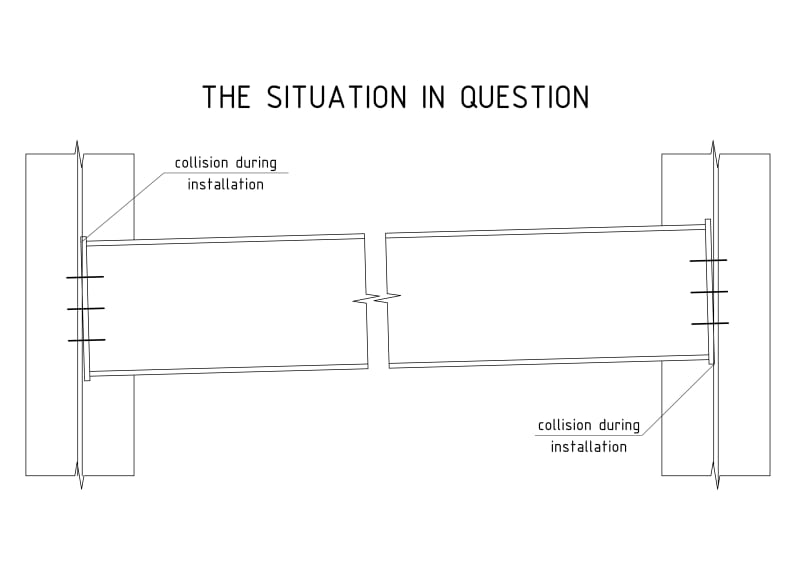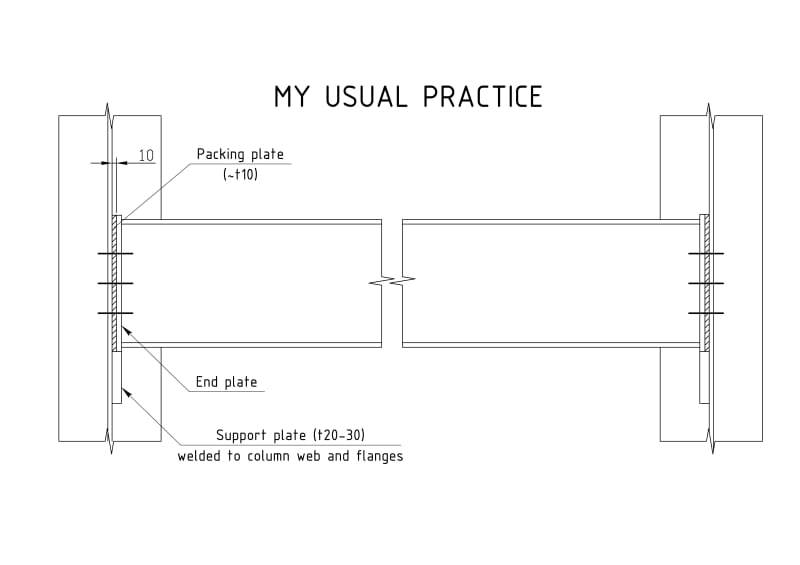Taras.D
Structural
- Oct 26, 2019
- 6
Hello everyone.
Trying to understand the application of the well-known "Green Book" and the UK practice of simple connections use. The question I have is as follows.
In case of end-plate connections when the end-plate is connected to column web how is it possible to install the beam without moving the column sidewards? In my country we use some sort of an end-plate connetion of this kind but with packing plates and the support plate which actually takes the shear force from the beam (see my draughts in the attached files.
I need someone closely related to steelwork erection to evaluate the matter: is it really possible to install a beam between two column webs without some extra space (previously assesed) and the installation of the packing plates afterwards.
In my practice the gap between the end-plates (especially in multistorey braced frames) can vary and is usually filled by few plates of a fixed equal thickness (like 4 mm each).
Actually the question is also relevant to other "tight" connections like beam-to-beam end plate connection from both ends, beam-to-column end plate connectins when the end plate is connected to column flange.
Thank you in advance.

 )
)
Trying to understand the application of the well-known "Green Book" and the UK practice of simple connections use. The question I have is as follows.
In case of end-plate connections when the end-plate is connected to column web how is it possible to install the beam without moving the column sidewards? In my country we use some sort of an end-plate connetion of this kind but with packing plates and the support plate which actually takes the shear force from the beam (see my draughts in the attached files.
I need someone closely related to steelwork erection to evaluate the matter: is it really possible to install a beam between two column webs without some extra space (previously assesed) and the installation of the packing plates afterwards.
In my practice the gap between the end-plates (especially in multistorey braced frames) can vary and is usually filled by few plates of a fixed equal thickness (like 4 mm each).
Actually the question is also relevant to other "tight" connections like beam-to-beam end plate connection from both ends, beam-to-column end plate connectins when the end plate is connected to column flange.
Thank you in advance.



![[pipe] [pipe] [pipe]](/data/assets/smilies/pipe.gif) . Beam-to-beam end-plate connections give me the most grief because they need to be rotated into place, so I reduce their width as much as possible. It's always a good idea to verify basic erectability within your CAD program. I'm doing some end-plates to column webs right now, and here's a very unofficial excerpt of what I'll be doing (unfinished, so don't be picky).
. Beam-to-beam end-plate connections give me the most grief because they need to be rotated into place, so I reduce their width as much as possible. It's always a good idea to verify basic erectability within your CAD program. I'm doing some end-plates to column webs right now, and here's a very unofficial excerpt of what I'll be doing (unfinished, so don't be picky).